Sicily is an island of diverse cultures, farming practices, and approaches to dairying. Many of the old ways and breeds involved with cheesemaking, however, are close to disappearing. Fortunately there are passionate advocates who are holding on, with the foresight that something may be horribly wrong with the modern industrial approach to raising livestock and feeding people. These are the people I seek out, the ones who were, maybe once, called crazy and are now seen as progressive visionaries. I met one such human yesterday, a man named Liborio Mangiapane, who raises Modicana cows alongside his family in the mountains of central Sicily.
Upon meeting him, my travel partner and Milk Trekking collaborator Carina and I sat down at a table for a bowl of a delicious treat - one that I am shocked I had not experienced before coming to Sicily. Zabbina is hot ricotta straight from the vat, along with its whey (ricotta whey is called scotta). It is comfort food, a representation of Sicilian hospitality, and at the Mangiapane house is fittingly served with broken up bread (Mangiapane translates as bread eater.)
Liborio jumped straight into his “philosophy of life”, which he credits his father with instilling in him. “Work hard, stay where you are, appreciate the small things”. When people run around seeking fortune and pleasure, the old ways that sustain families and communities are abandoned and true wealth is lost. When I asked him how people might keep the old ways alive he leaped up with theatrical passion and outrage. “Take every thing out of your pockets, throw it on the ground, spit on it, and get to work!”
Liborio’s philosophy, his love for his family, land, and life, are embodied in the Modicana cow, and the well established agropastoral crop rotation system that was a major part of the regional economy and landscape. In the 1960s the breed was still the main type on the island, until the adoption of the much touted Holstein/silage/commodity milk model that has spread rapidly, destroying locally adapted systems of dairying and cheesemaking the world over. Now there are approximately 1000 Modicana left, and the farmers who switched to the Holstein model are failing left and right, rising fuel and fertilizer costs showing the true inefficiency of the approach. Liborio stubbornly stuck to the time tested practice of growing hayfields with a mixture of seeded legumes and wild plants, then growing grains (wheat, barley) the next year. The Modicana thrives in this low input system, little grain is needed, they produce almost all the feed onsite. One of his milking cows is 18 years old, a testament to the symbiosis between the breed and the farming practices of its caretakers.
Walking with Liborio through hilly green pasture, he spoke of his farming in poetic, religious terms. When asked how often he moved his herds, he replied - pointing up to the sky - “it’s up to God”. I took this to mean, that it depends on how much rainfall they have received, and on the amount of available feed. For him the work of caring for a landscape, his family, and his animals is doing God’s work, “it’s the simple task that God gives us”. I have always interpreted the implications of Christianity on nature and land use negatively, but there are many ways to read a book. This man is a true land steward, his livestock are very well cared for. As much as I love the science involved in regenerative grazing practices and milk fermentation, more and more I feel that what is missing in the modern western approach to farming and cheesemaking is humility, and the acknowledgment of the limits of the intellect. People make things too complex with big words, he said, this stuff is actually simple you just need to slow down, pay attention, and learn from those who came before you. True wealth is not monetary, but having a sense of belonging to a place. You take care of the land, and it will take care of you.
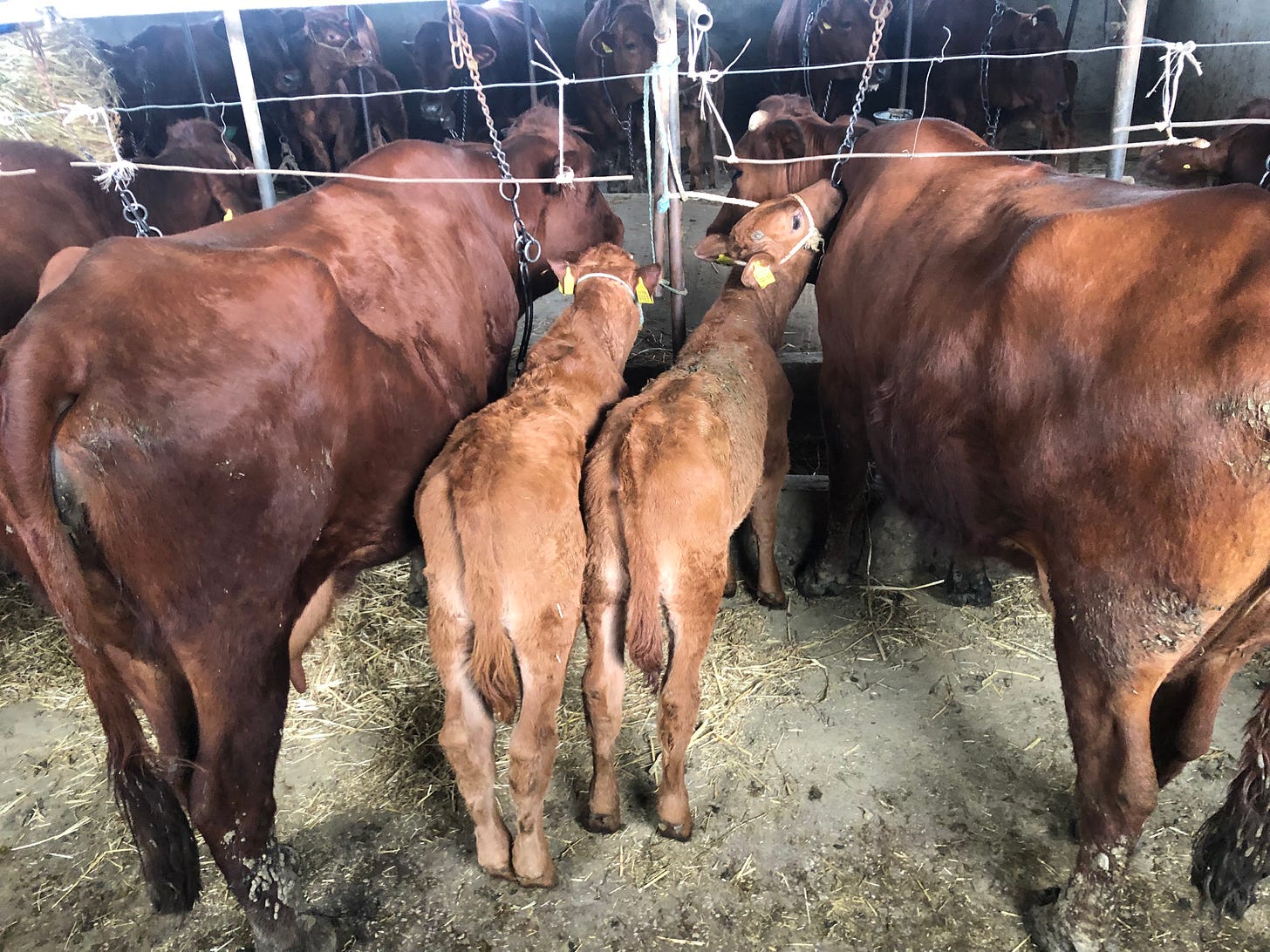
The cheeses made here are a further distillation of this philosophy, these cows, this land. They make a caciocavallo that looks like Ragusano but is truly its own beast. It has a bold yellow color and tastes like the animal from which it came; a pasture raised, healthy cow. To call it unique and complex is a good start, but doesn’t express the jarring sensation I had when tasting it. Rich flavors of grass and plants collide with primal meatiness, forget brothy, this reminds me of beef tallow and liver. The cheese is like Liborio, overflowing with vivid colorful poetry. It’s almost too much, it is overwhelming, romantic yet firmly on the ground, of a place, a remnant of an older, slower, more sane approach to life. My mind attempts to categorize the experience my mouth is having, and I detect familiar flavors, but there is something novel and undefinable in it. Words can only go so far, or, as Liborio says, there are words that you feel rather than think. This is a cheese that you feel rather than grasp intellectually.
The make process similarly ties together elements I understand, but haven’t seen put together in this way. There are videos of this on my Instagram: @milk_trekker. The day’s curd is fermented with whey from the day before, making it a natural starter culture cheese. The curd is removed from the vat and placed in a cheesecloth on a bamboo mat. A board is placed on top, and buckets full of whey used to press the “Tuma”. Every hour or so it is folded on itself, elongating the curd into sheets, that resemble those of some UK cheddar makers. These sheets are hung on a rack in a warm room, a practice I have not seen in any cheesemake before. What is happening here is a slow fermentation and altering of the curd structure, essentially pre-stretching the curd.
The next day the curd is ready to be stretched. It is a property of fresh cheese, that when it is in a particular range of acidity (roughly 5.4 - 5 pH) it will stretch when placed in hot water. The amount of stretch can be used to infer pH, quite accurately by a seasoned maker within an often repeated make. Many cheeses have a final pH in this range, so it can be a valuable method to determine when a cheese is ready to be salted, or when the pH has dropped below 5, for feta for instance. I’ve seen many pasta filata cheeses (those stretched in hot water, such as mozzarella) in Sicily, and the makers here seem to have their makes dialed to the point that they know it will be ready to a stretch at a certain time the next day, or the day after that. I have rarely seen the use of a pH-meter here. It is unclear how they worked out the variables to get this timing down, but the slow fermentation leaves a large window when the curd can be stretched. Generations of trial and error give a huge advantage to these family-made cheeses.
The curd sheets are cut and pulled into strips which are placed in a purpose build metal bowl, and water just below boiling is added in a measured amount. The water gets milky, and with this cheese there is a visible yellow fat layer that rises to the top. I haven’t seen this with other pasta filata, it may be due to the pre-pressing, and cheddar like curd-elongation. It reminds me of the greasy fat that escapes when cheddar is pressed. The water slowly cools as the curd is stretched in it, eventually a large mass is formed by hand with smooth sides. Like with other cheeses of this styles, a topknot - or as they call it in some areas here a “fungia” meaning pouted lip - is formed and cut off, then the seamless mass is placed in a wooden box. This box is very similar to that used with Ragusano, wood boards and blocks shape the malleable hot curd into a rectangular loaf that is flipped as it cools. The next day, the cheese is brined before going into an aging space to develop flavor over many months.
One of the most satisfying things about visits like this, is the realization that many people around the world are coming to similar conclusions, from very different backgrounds, cultures, and age groups. The ground is fertile for the seeds that people like Liborio have held onto. The world needs theses seeds now more than ever, as things are shifting rapidly, and the failures of industrial agriculture and food production surround us on all sides. Like Liborio says, these seeds (the farming methods, cheese making techniques, philosophy of life) are not his to own, they belong to us all, and he wants to see these seeds spread to other lands. Finding these seeds, and spreading them, while learning how they can be adapted to different soils, is my work.

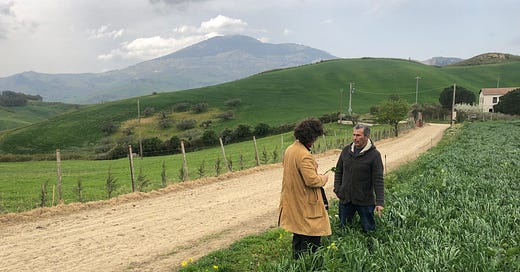



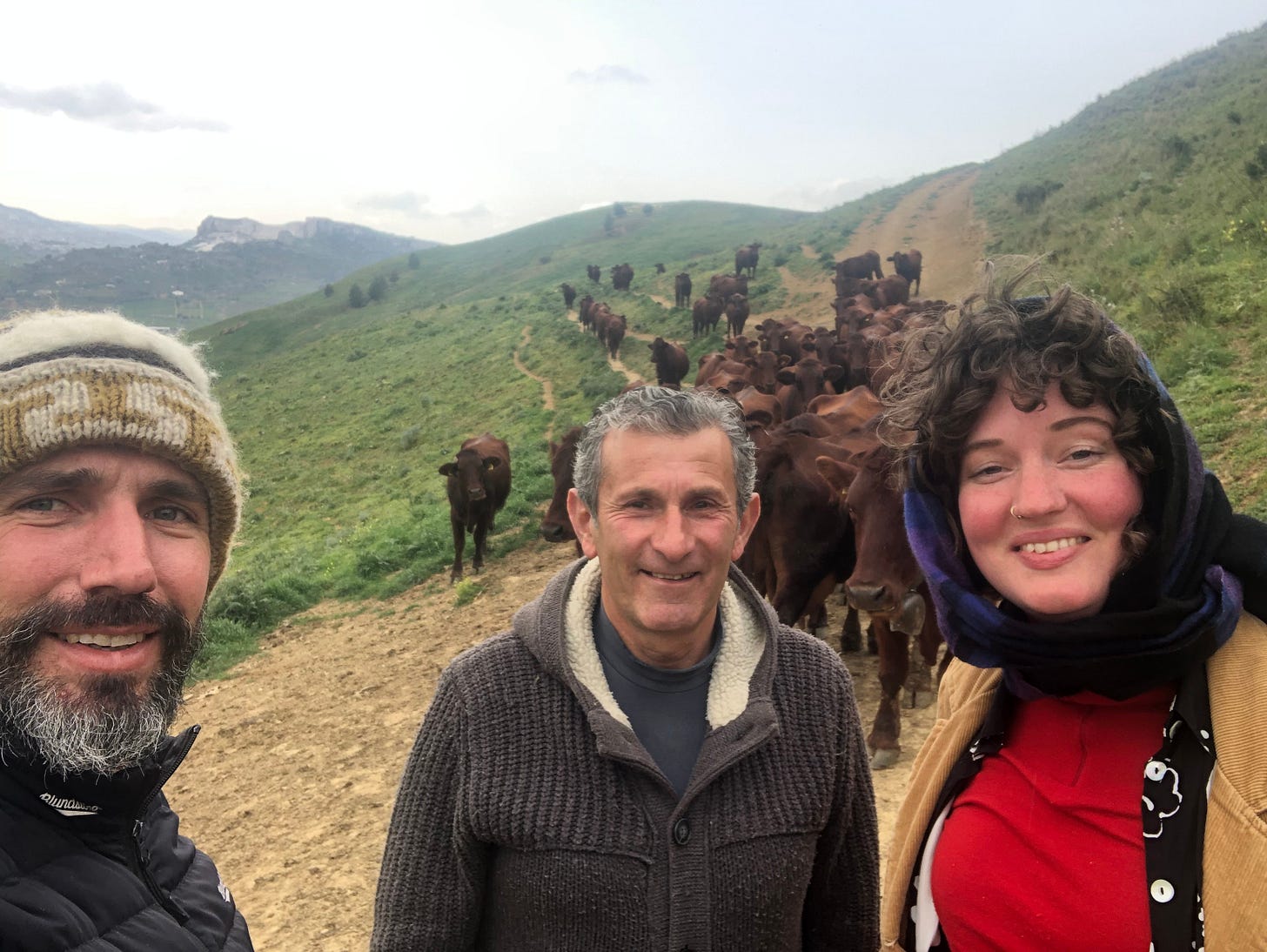
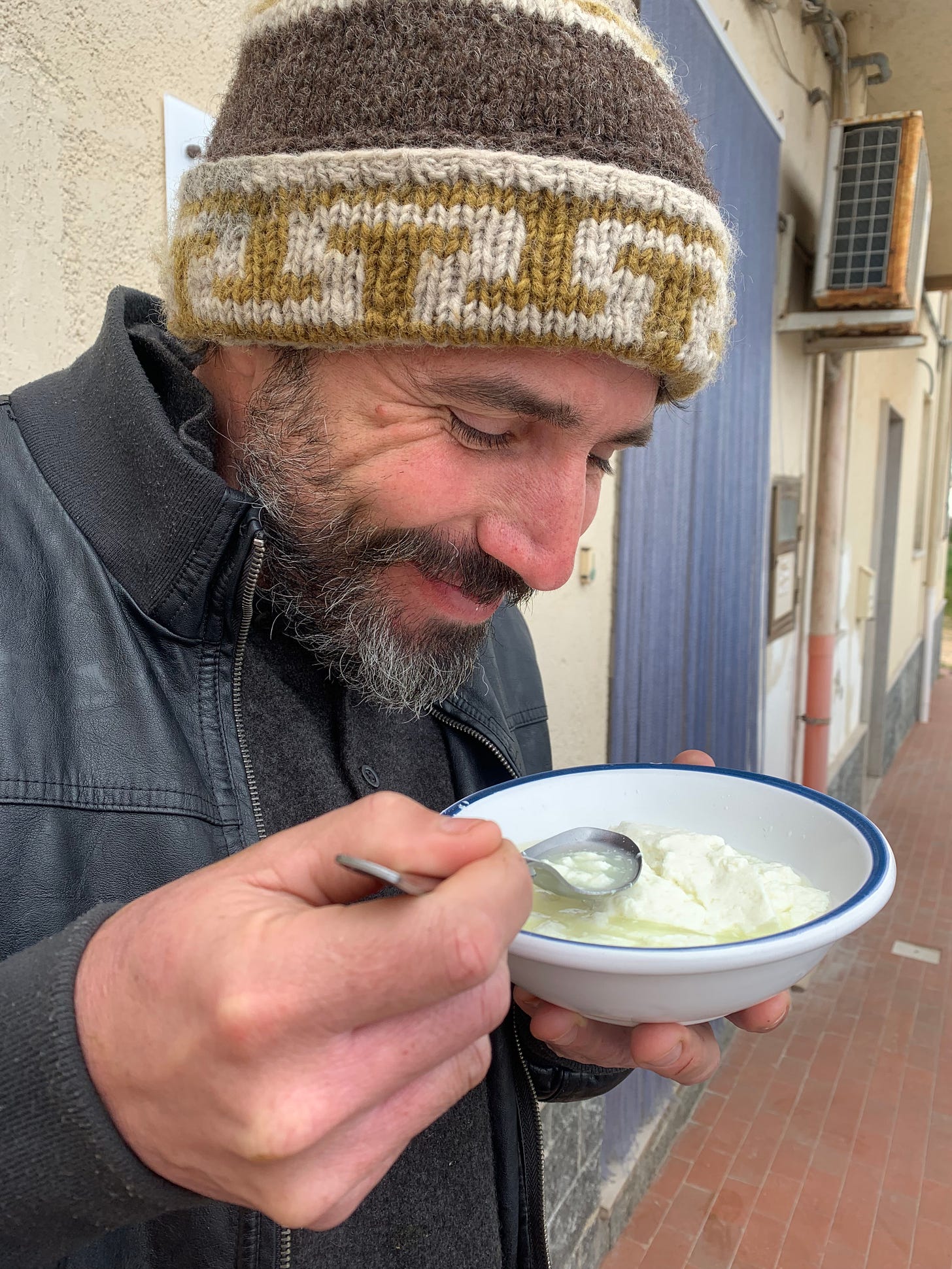
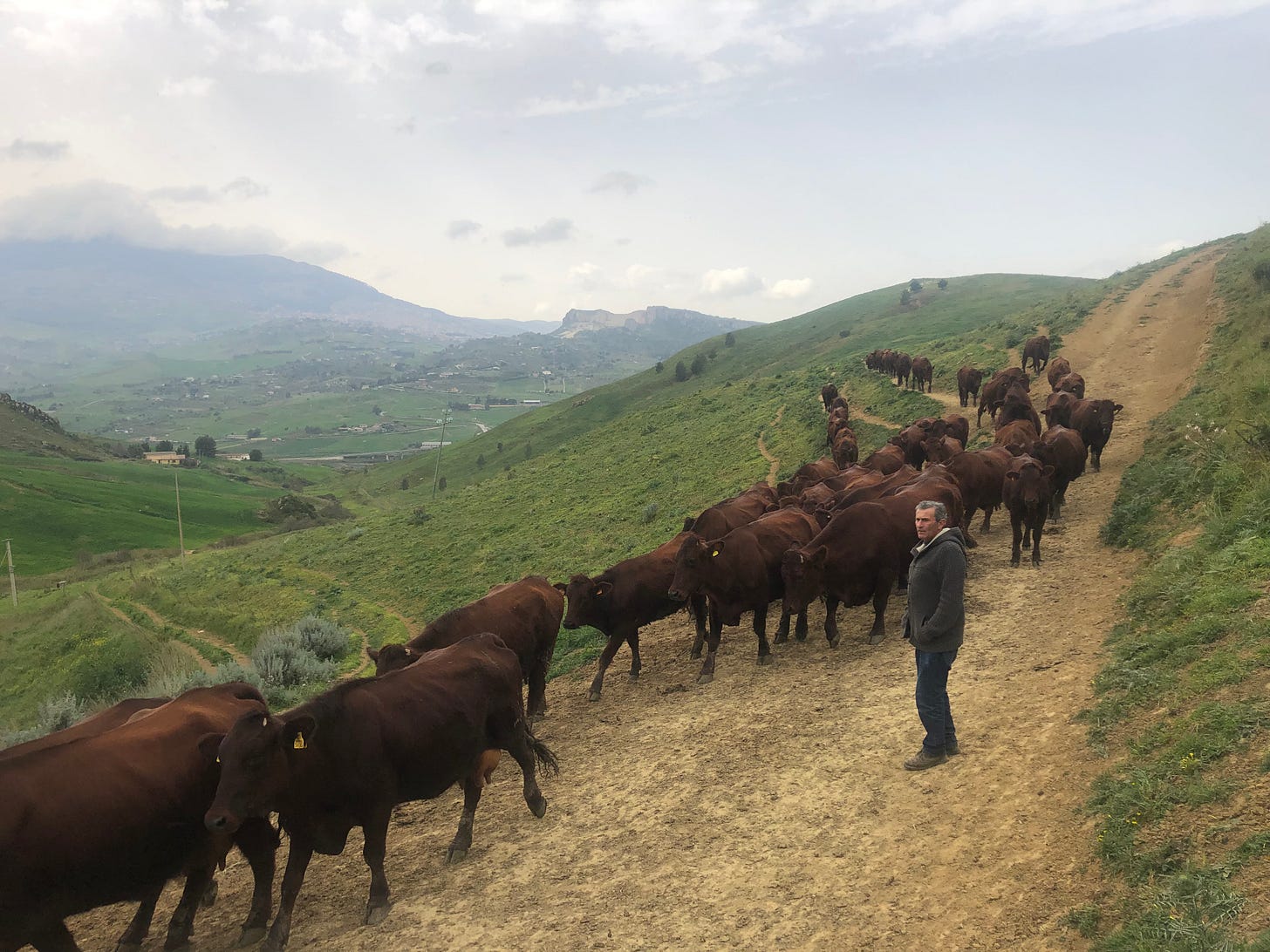
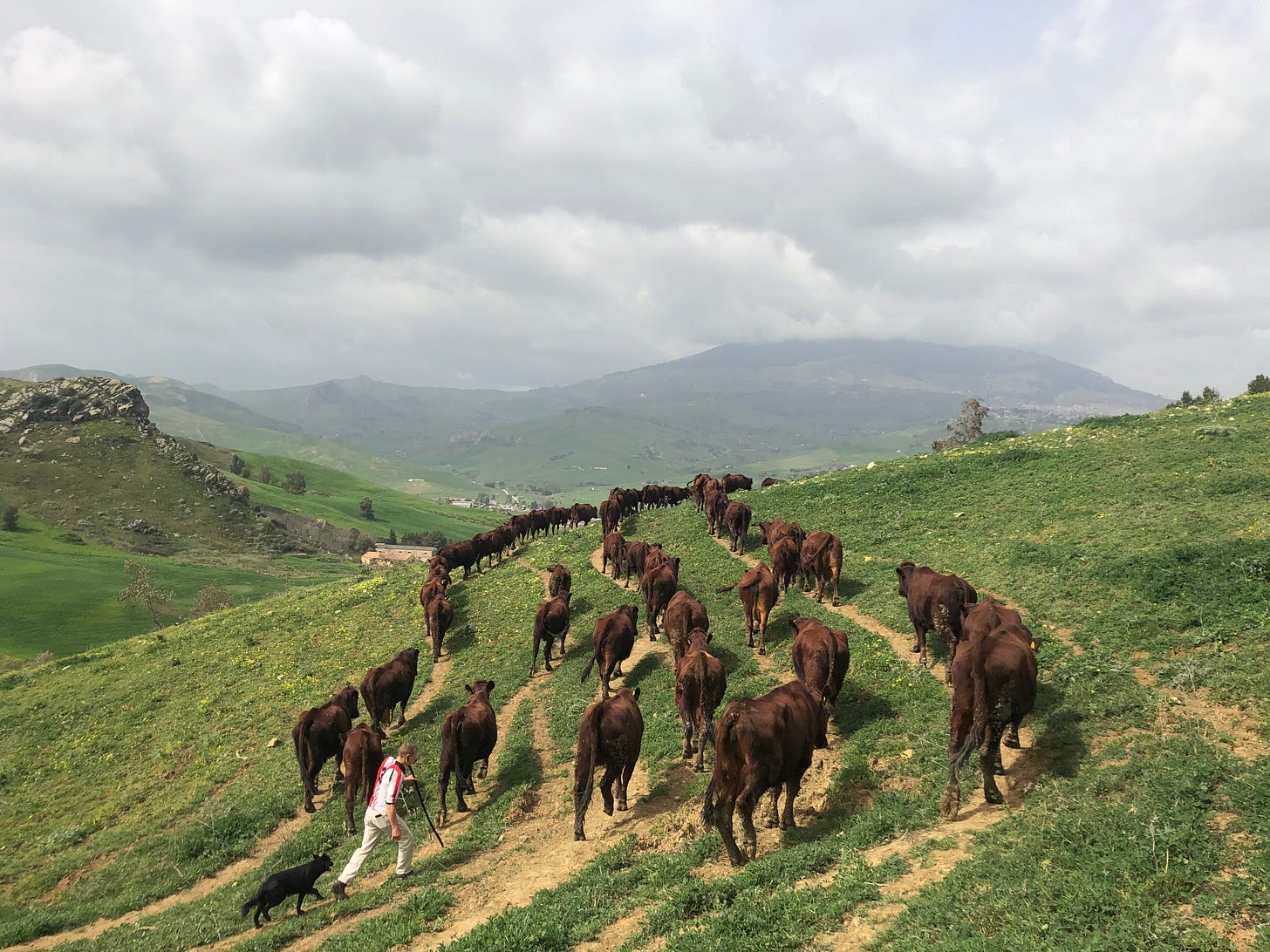
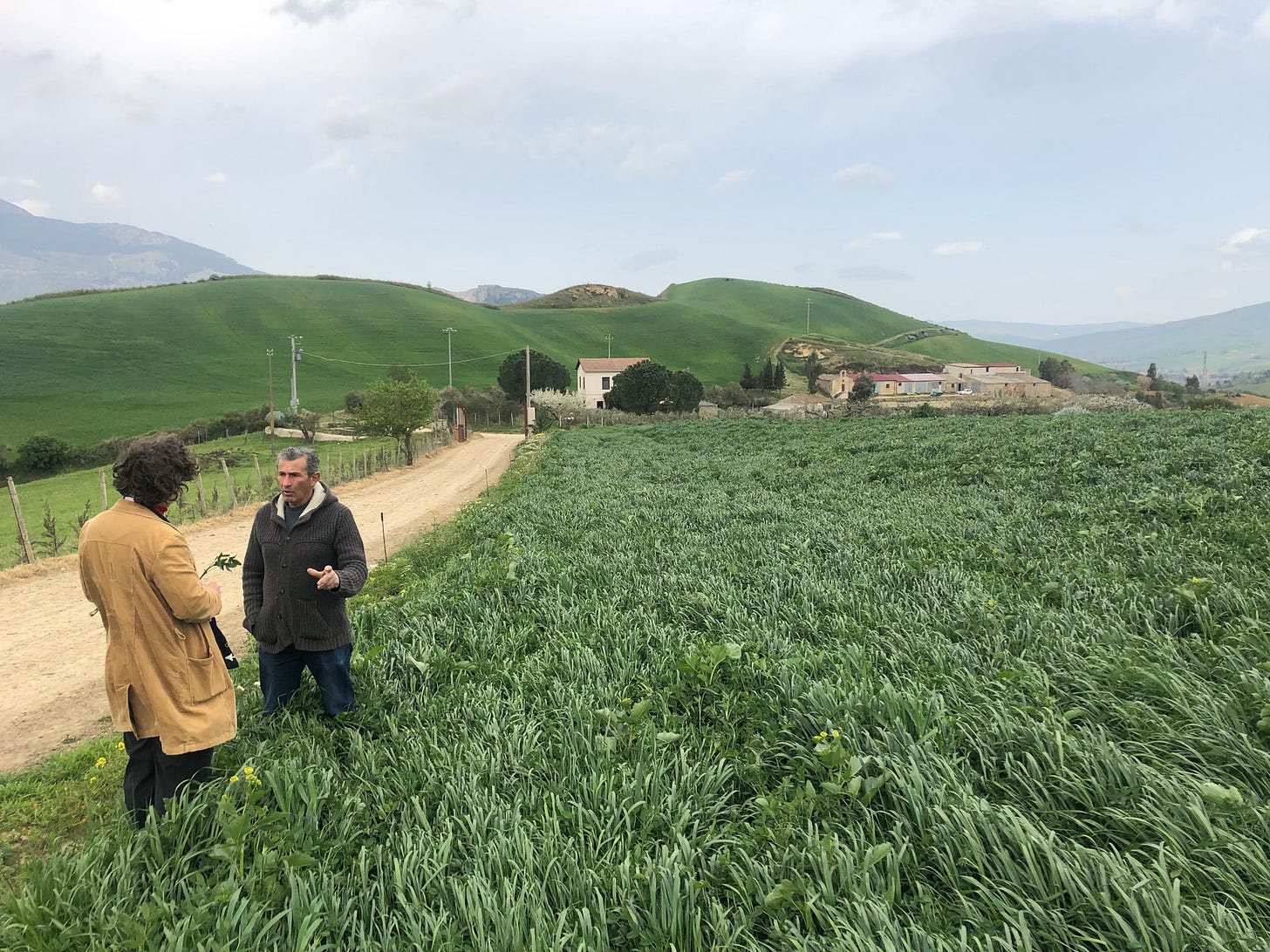
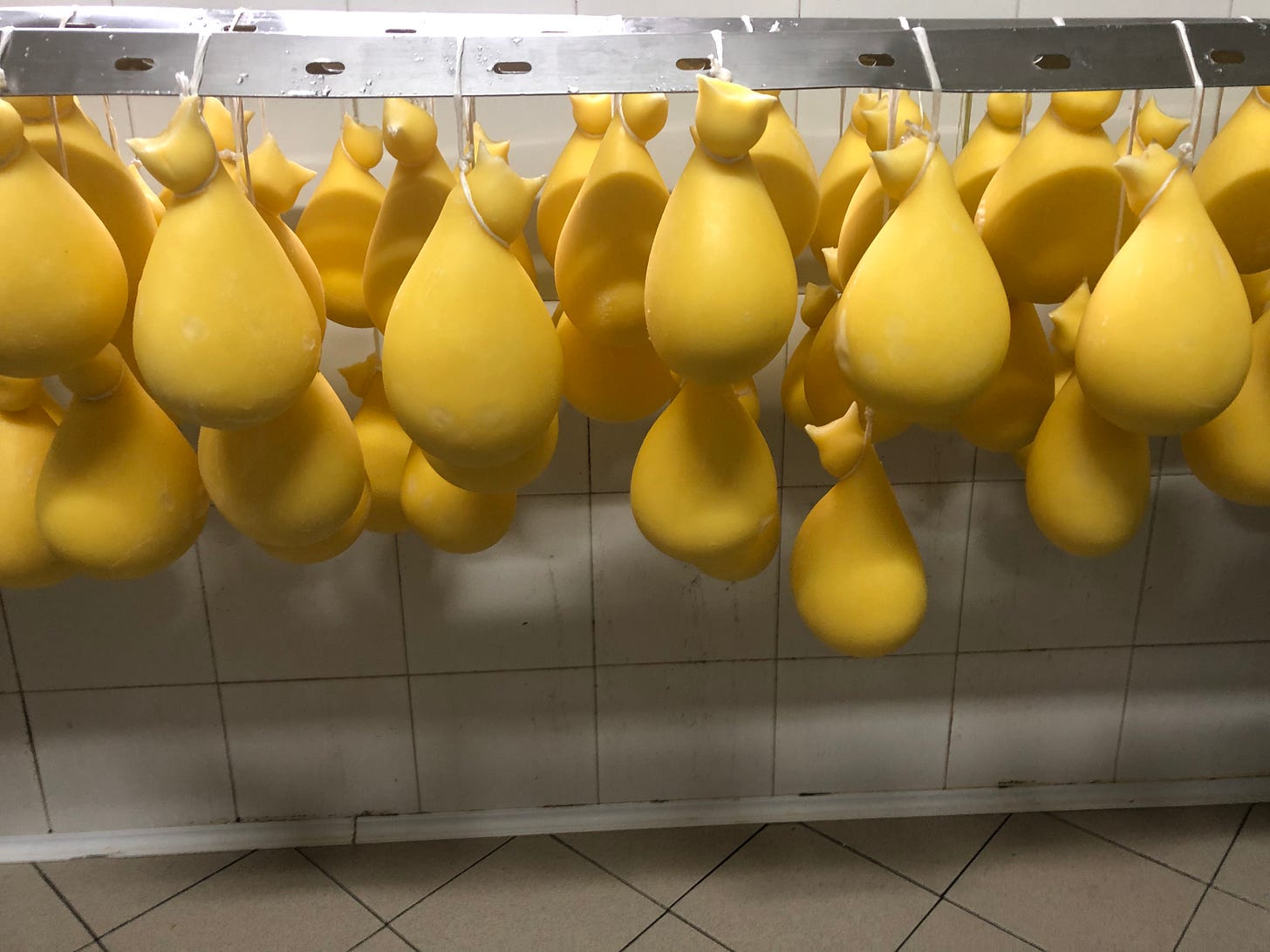
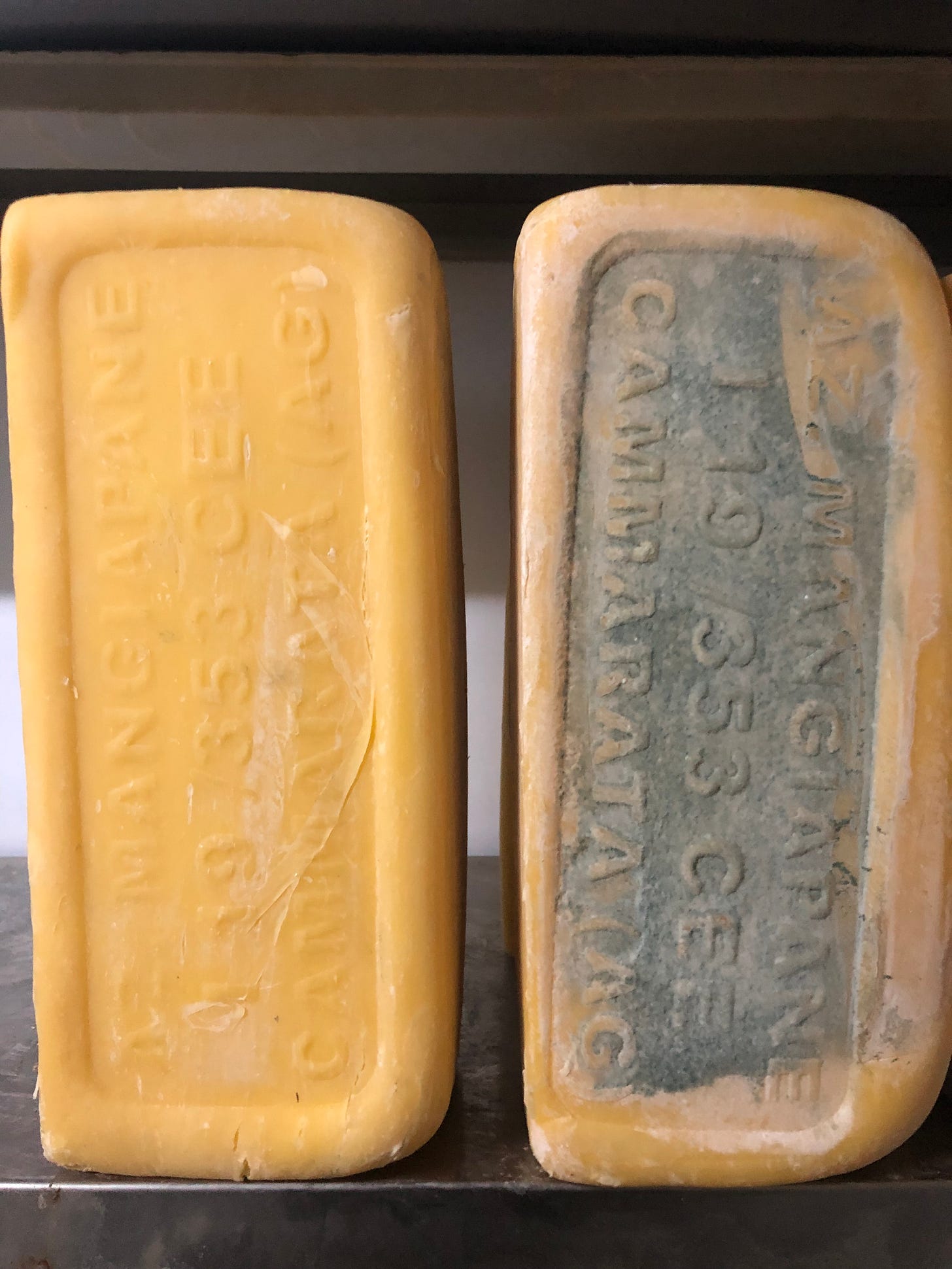
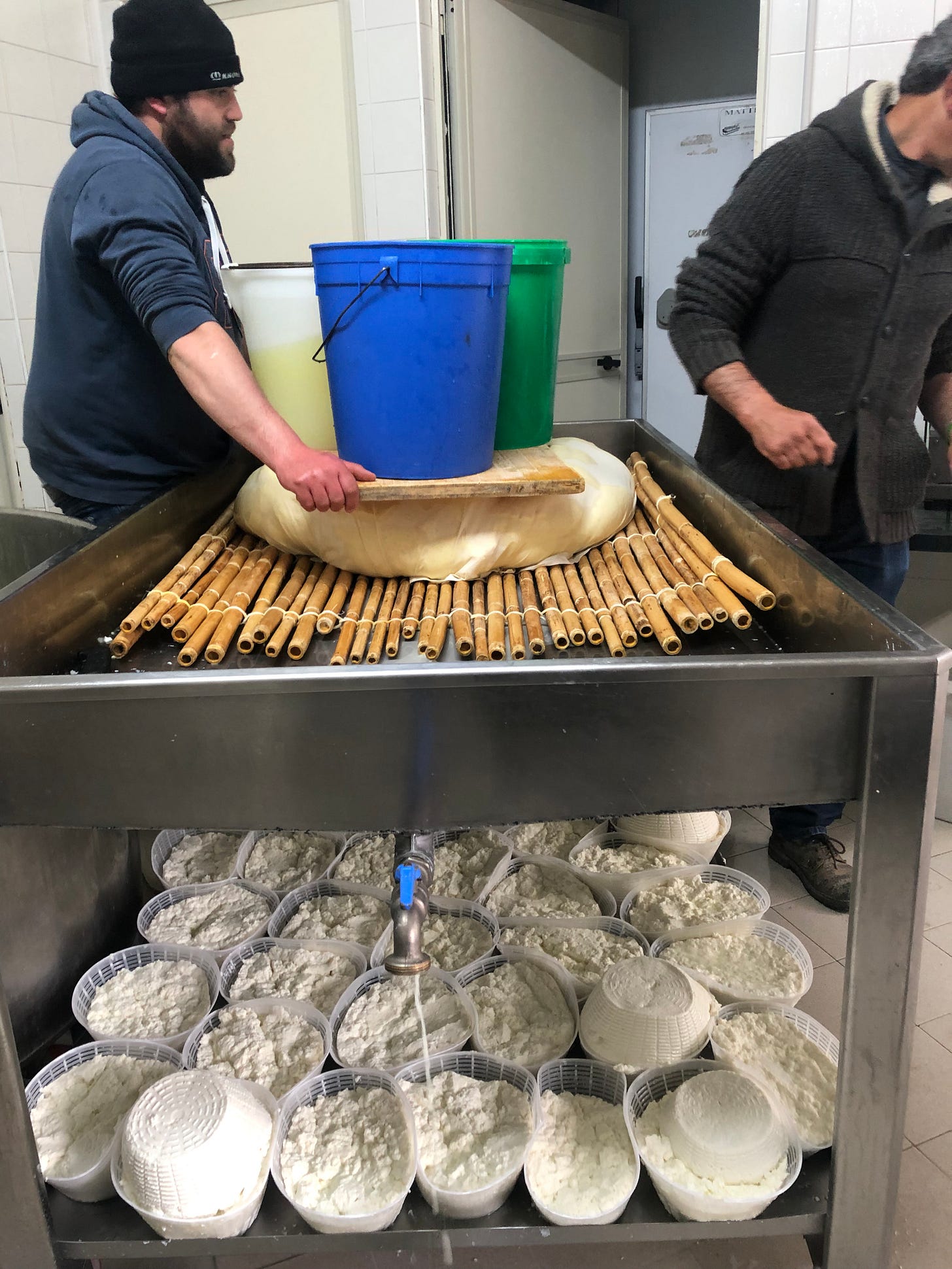

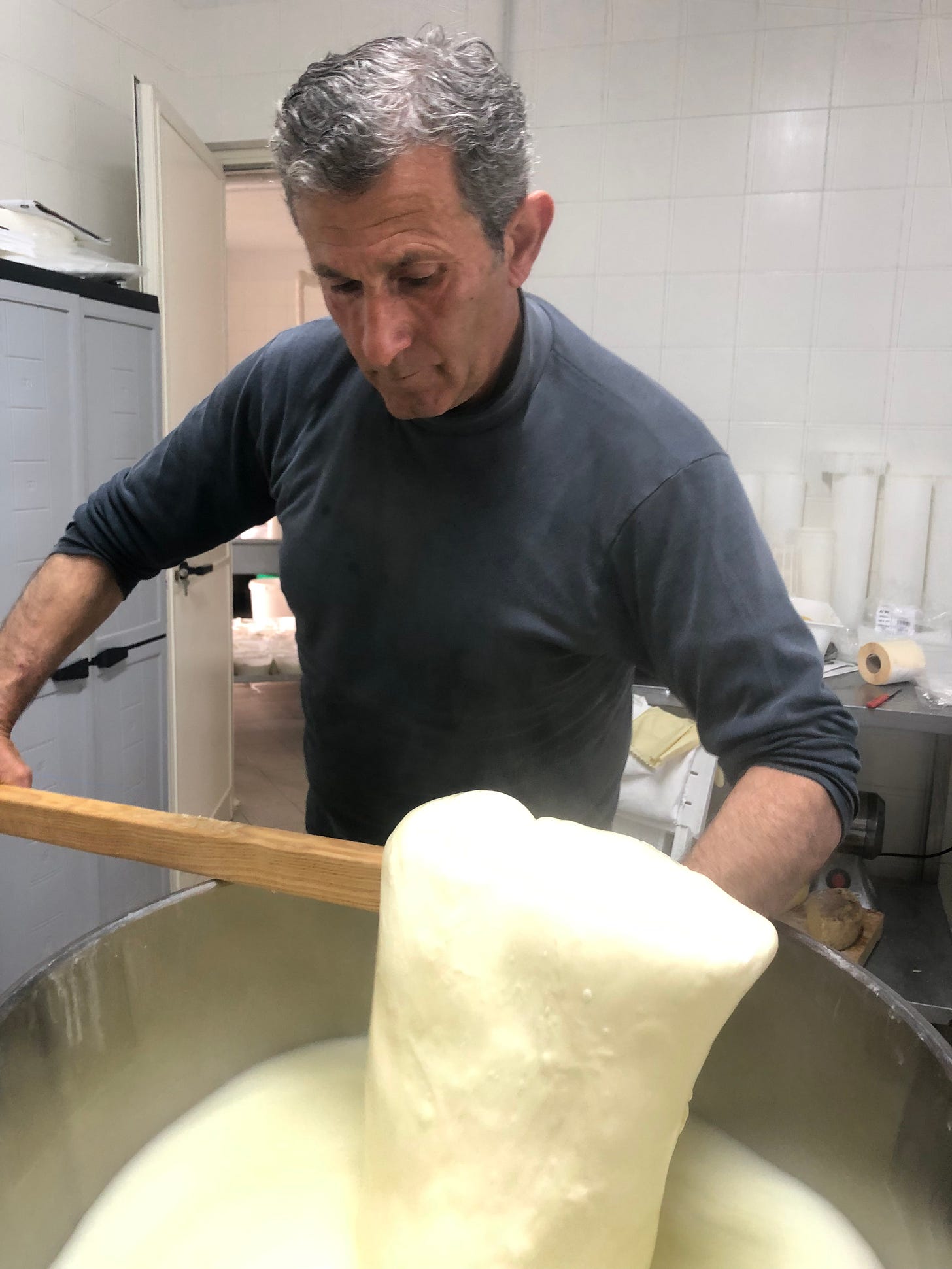

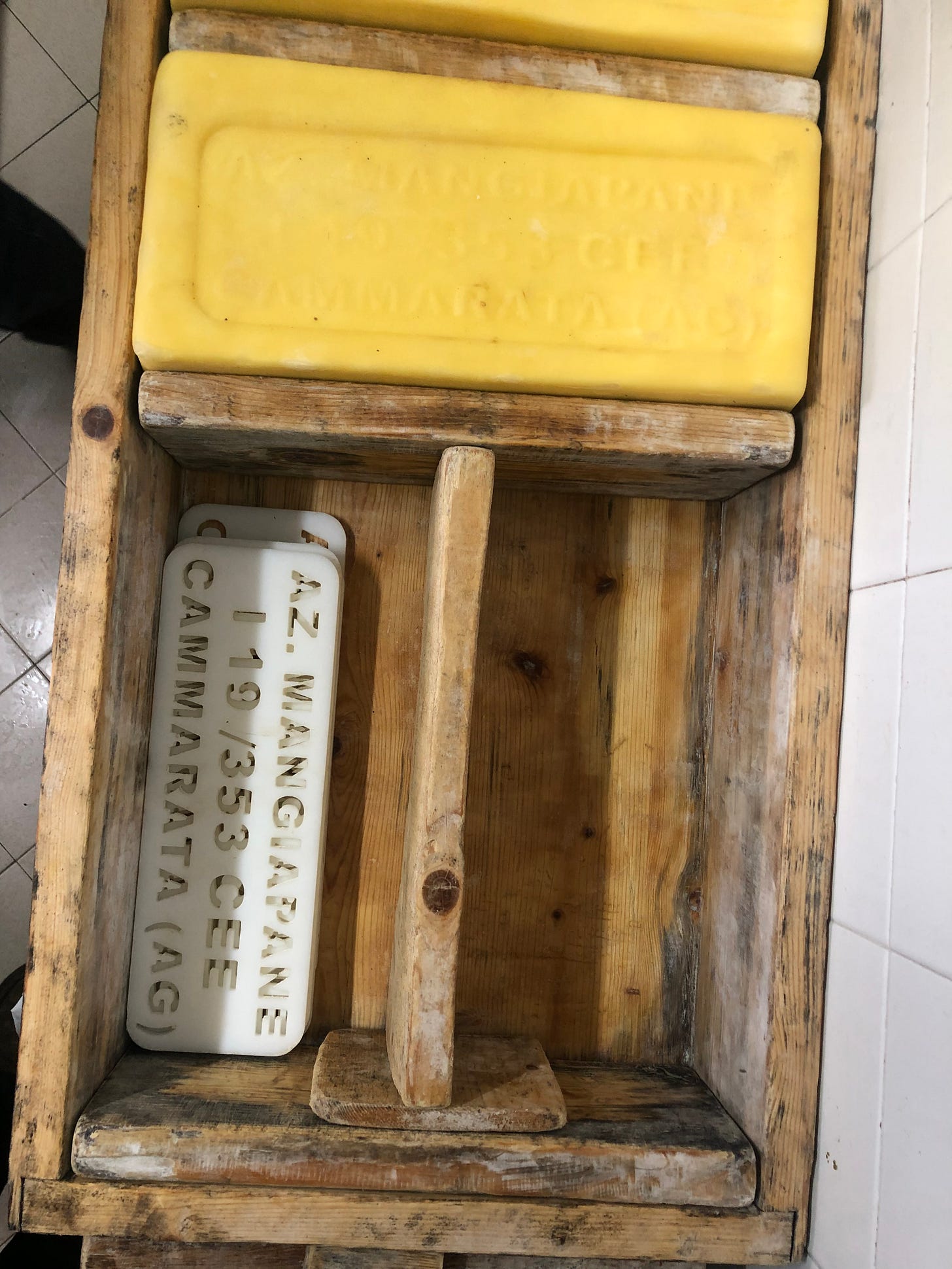
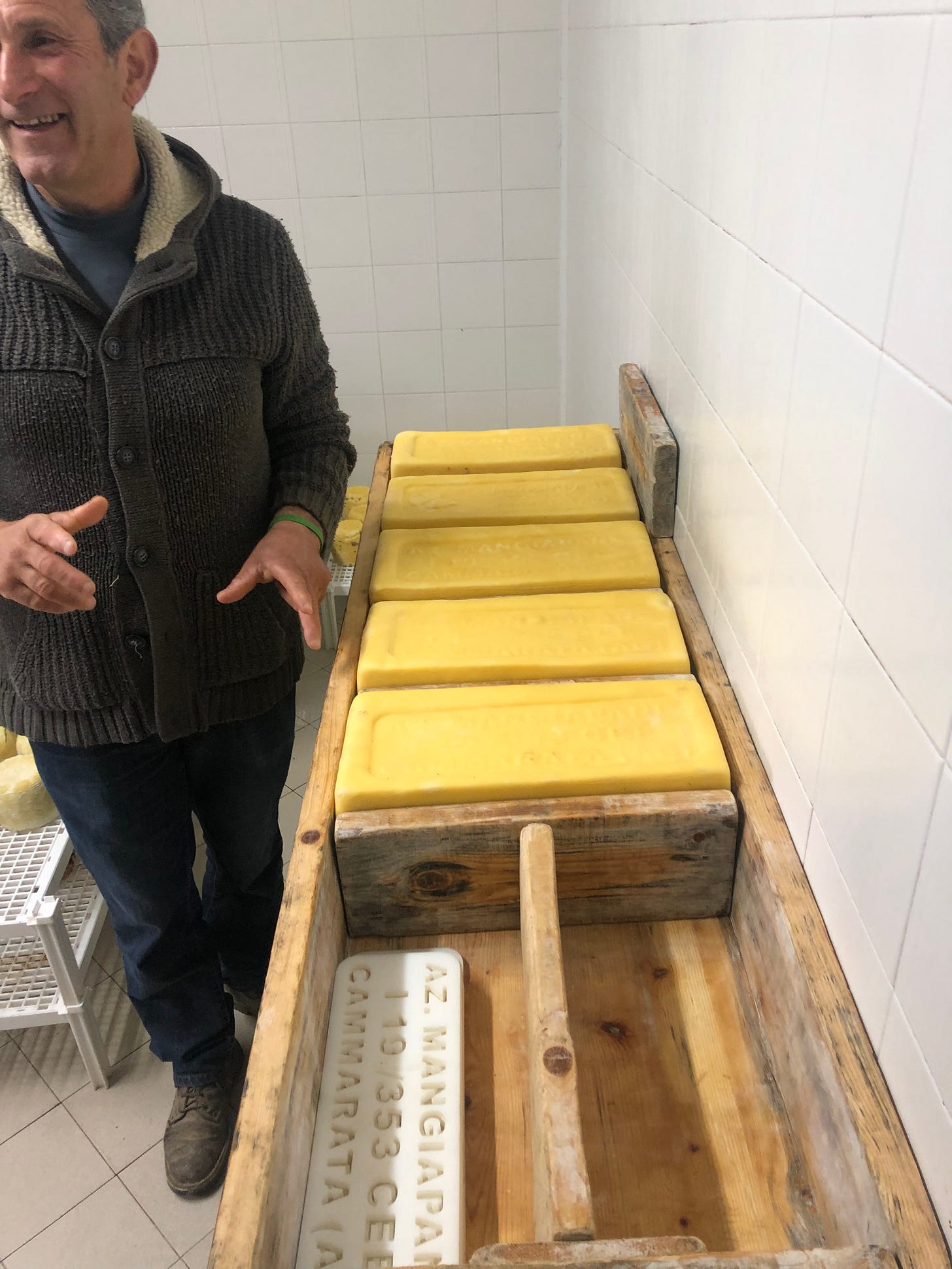
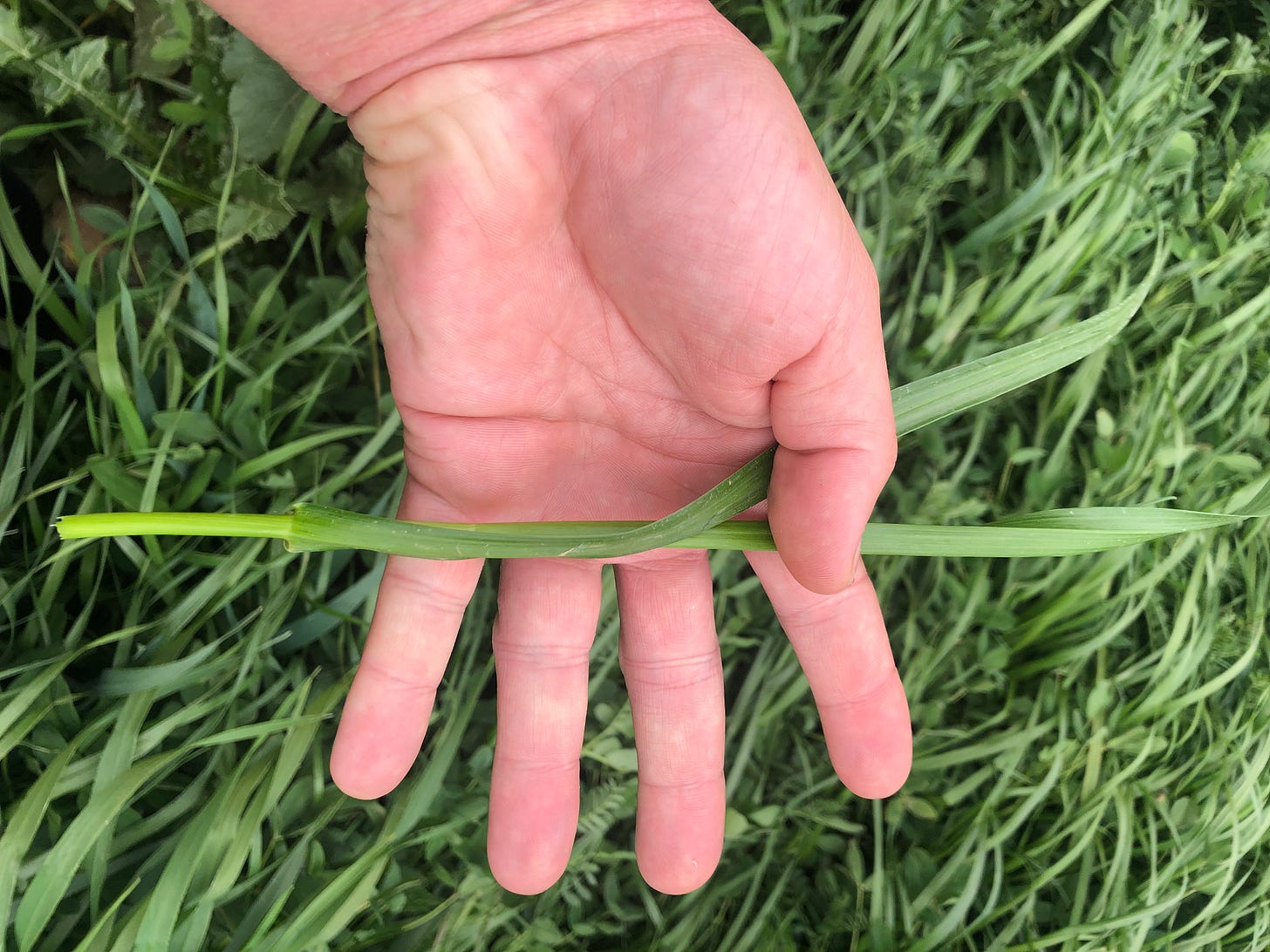
As always your observations of and interactions in a faraway place have connected us….they may be in Sicily, but this farming family holds our views, almost to the letter. Thank you from the bottom of our hearts. And keep writing and sharing. We love your travels.